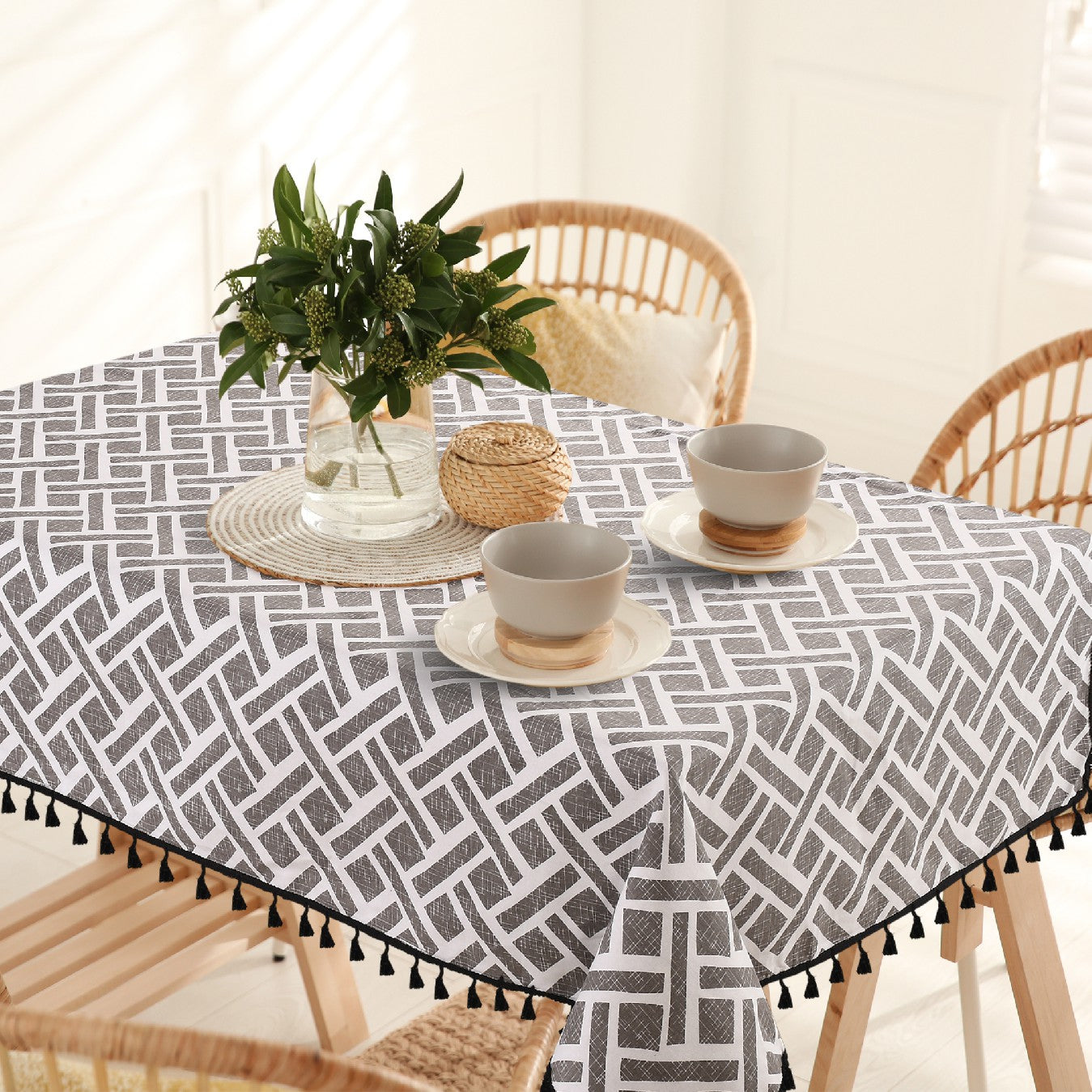The Art of Table Covers: From Functionality to Aesthetic Appeal

Introduction
Table covers have been an integral part of human culture for centuries, serving both practical and aesthetic purposes. From simple cloths to intricately designed linens, table covers have evolved alongside society, reflecting changes in fashion, technology, and cultural norms. In this essay, we will explore the multifaceted role of table covers, delving into their historical significance, practical functions, and their contribution to the aesthetics of various settings.
Historical Evolution
The history of table covers dates back to ancient civilizations such as the Egyptians and Mesopotamians, who used simple fabrics to protect their tables from spills and stains. In medieval Europe, tablecloths became symbols of status and wealth, with elaborate designs and fine materials reserved for the nobility. As trade routes expanded during the Renaissance, exotic textiles from distant lands found their way onto European dining tables, further enriching the tapestry of table coverings.
Practical Functions
At its core, the primary function of a table cover is to protect the surface of the table from damage. Whether it's a spill during a family dinner or scratches from everyday use, a table cover acts as a barrier, preserving the integrity of the table beneath. In addition to protection, table covers also serve hygienic purposes, especially in food service establishments where they help maintain cleanliness and prevent the spread of germs.
Moreover, table covers contribute to the ease of table maintenance. Instead of cleaning the table surface directly, one can simply remove and launder the table cover, saving time and effort. This is particularly advantageous in high-traffic areas such as restaurants and banquet halls, where efficiency is paramount.
Aesthetic Appeal
Beyond their practical functions, table covers play a crucial role in enhancing the visual appeal of a space. The choice of fabric, color, and design can transform a mundane dining area into an elegant banquet hall or a cozy kitchen into a charming breakfast nook.
In formal settings such as weddings and upscale restaurants, table covers are often selected to complement the overall decor and theme of the event. Luxurious fabrics like silk and satin, adorned with intricate embroidery or lace, add an air of sophistication and refinement to the dining experience.
Conversely, in more casual settings, such as family gatherings or outdoor picnics, table covers may feature vibrant colors and playful patterns, creating a festive atmosphere and encouraging lively conversation.
Cultural Significance
Table covers hold significant cultural symbolism across different societies. In many Eastern cultures, such as Japan and China, the act of laying out a table cover is imbued with ritualistic importance, signifying respect for guests and the sanctity of the dining experience. Similarly, in Western traditions, the table cover is often associated with hospitality and generosity, as it is seen as an offering of comfort and warmth to those gathered around the table.
Furthermore, table covers are often passed down through generations as heirlooms, carrying with them memories of shared meals and special occasions. In this way, they become tangible links to the past, connecting families and communities across time.
Read More: Choosing the Perfect Table Cover: Tailoring Your Table Linens to Occasions
Conclusion
In conclusion, table covers are much more than mere fabric draped over a table; they are symbols of cultural heritage, practical tools for everyday living, and expressions of personal style. Whether they adorn the tables of grand banquet halls or the humble kitchens of ordinary homes, table covers continue to enrich our lives in countless ways, bridging the gap between the functional and the aesthetic, the practical and the profound.
